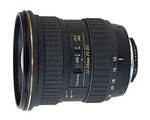
October 30, 2007
Having trouble viewing this newsletter? Read the latest issue online at
https://www.digital-slr-guide.com/dslr-news.html
If someone you know has forwarded you this newsletter and you've enjoyed it, subscribe now to receive the next issue when it's published.
DSLR News - October 2007Are you gearing up for the holiday season? I know we are - it seems like the next six weeks are booked solid with parties, planning and activities.While I can't help you figure out how to bake that turkey for Thanksgiving dinner, I can give you a quick look into the 10 megapixel digital SLR cameras currently available. Why 10 megapixels? Well, despite my hope that the camera companies would focus on other features besides megapixels, they just continue to relentlessly increase that number. A year ago, 6 megapixel cameras were all the rage, but now that number has jumped up to 10. These are the cameras that dominate the marketplace. If you really would like to get your hands on an SLR but just don't have the will to drop over $500 on a camera, then my only advice is that you check eBay for one of the old 6 megapixel models (since even the new 6 megapixel cameras retail for more than that). Just realize that a lot of technical innovations (including enhanced autofocus, live view LCDs, dust control, image stabilization, faster performance) won't be available in those cameras. If you DO want to get your hands on the latest technology and DON'T mind paying some extra money to get it, then here's a quick rundown of your options when it comes to 10 megapixel digital SLRs. The Sony DSLR-A100, Canon Rebel xTi and Nikon D40x can all be considered "budget" cameras in this category, since each one retails with a kit lens for about $700. The A100 has built-in image stabilization (IS) - if you want IS with the Canon and Nikon, you'll have to buy an IS lens. Both the A100 and Rebel xTi have dust control systems, while the key feature of the D40x is an LCD display that helps beginning photographers find their way around camera settings like aperture, shutter speed, ISO and white balance. The next step up includes the Olympus E-410 with its dust control and live view LCD, the Pentax K10D, which has dust control and built-in IS. The Olympus E-410 is the smallest and lightest digital SLR you can buy, while the K10D is notable as one of the top rated digital SLR cameras. For $100 more than the E-410 you can pick up the Olympus E-510 which is slightly larger but has the benefit of a built-in IS system. Once you're willing to break the $1,000 price barrier, the options include the Nikon D80 and Nikon D200 (also a top rated digital SLR), the Panasonic DMC-L10, Canon 40D and the soon-to-be-released Olympus E-3 (more on this camera later in the newsletter). The Nikon D80 is notable for its exceptional speed, but is equally notable since it includes no "extra" features. The D200 is a pro-grade camera released two years ago that was recently replaced with the 12 megapixel D300. The D200 is still an exceptional camera with lots speed and custom controls designed for advanced photographers. The Canon EOS 40D is one of the fastest digital SLR cameras for consumers, and includes dust control and a live view LCD (upgrades over the previous 30D model). The Panasonic DMC-L10 also has a live view LCD, but with a twist: the LCD flips out from the camera body and can be angled for high and low-angle shots. The DMC-L10 also features Panasonic's face detection technology, designed to help with autofocus and exposure when taking portraits of up to 15 people at a time.
|
In This Issue
Latest SLR Guides
Olympus E-510
Nikon D80
Canon Rebel xTi
Nikon D40
Sony ALPHA A100
Digital SLR Terms
Megapixels
Anti-Shake
ISO / Image Noise
Sensor Dust
Crop Factor
RAW vs. JPG
Continuous Photos
Autofocus Points
Aspect Ratio
Lens Terms
Focal Length
Prime vs. Zoom
Maximum Aperture
First vs. Third Party
SLR Lens Features
Canon Lens Glossary
Nikon Lens Glossary
|
Digital SLR Lessons
- Learn digital SLR camera jargon
- Master the controls of your digital SLR
- Dramatically improve the quality of the photos you take
Digital SLR Q & A
Question: Which lenses are compatible with the different camera models?
Answer

Manufacturer-specific lenses are made by the camera companies: Canon, Nikon, Olympus, Pentax, etc. Third party lenses are made by three main companies: Sigma, Tamron and Tokina (there are others, but these three produce the highest quality for a variety of camera models).
A manufacturer-specific lens will ONLY work with a camera from the same manufacturer. Canon lenses are only compatible with Canon cameras, and cannot be used on a Nikon or Olympus camera.
By contrast, the same third party lens can be found for a variety of cameras. The key that makes this work is something called a lens mount.
The lens mount is where the lens attaches to the camera body, and each manufacturer's lens mount is a slightly different size (which is why you can't swap lenses across manufacturers). Third party companies produce the exact same lens with a variety of lens mounts.
For example, Tamron has some lenses that have different mounts for Canon, Nikon, Pentax and Sony. Only the most popular third party lenses come with this many different mounts. The vast majority of third party lenses are only compatible with the two most popular camera makers: Canon and Nikon.
Olympus and Panasonic are off in a world all their own when it comes to lenses. These two companies - in a partnership - have made their cameras according to a standard called the 4/3 system.
Lenses made for 4/3 cameras CAN be used across manufacturers, because the lens mount is identical. In this case, an Olympus-made lens can be used on a Panasonic camera and vice-versa. Sigma also makes a variety of 4/3 lenses that you can choose from.
To date, Olympus and Panasonic are the only two companies that use the 4/3 system.
Before we wrap up here, let's talk about legacy lenses. These are those old lenses that you have lying around in some hall closet from back in your film days before you made the switch to a compact digital and never looked back.
Many old film SLR lenses are 100% compatible with their new digital SLR counterparts, but there are some exceptions:
- All Canon EOS lenses will work with the Canon digital SLR cameras (the Rebel XT, Rebel xTi, 30D and 40D)
- All Nikon Nikkor lenses will work with the D80, D200 and D300 - lenses without an AF-S designation won't autofocus on the D40 and D40x
- All Pentax lenses will work with the Pentax digital SLR cameras (including the K100D, K100D Super and K10D)
- Old Olympus lenses can be attached to the new 4/3 cameras (E-410, E-510) with a special adaptor - but autofocus won't work
- Konica Minolta lenses are only compatible with the new Sony digital SLRs - the DSLR-A100 and the DSLR-A700
- Samsung cameras are compatible with Pentax lenses (they're partners)
- Panasonic cameras are only compatible with the new Olympus 4/3 lenses
Whether you're just looking at lenses for the first time, or want to upgrade to something new, I recommend that you work through my 6-step process to find the best digital SLR lens.
Digital SLR Technique
For more digital SLR camera techniques, please browse through the back issues of this newsletter (especially helpful if you find me rambling about something that makes no sense).Last month we talked about white balance, and how setting the white balance manually can help you capture accurate colors for the duration of a photo session.
That was the tech-talk - now let's chat about a technique that has less to do with your technical ability and more to do with how you compose a photo.
What I'm alluding to here is a technique that I like to call "Color Complements".
One way to improve the visual impact of your digital photos is to find subjects and scenery where the colors complement each other.
This is a lot like getting someone with good color sense to decorate your home: colors that go together will create an environment that's pleasing for the eye, while colors that fight with each other will make you want to leave the room and go look at something else.
This is not to say that every image should have colors that go together like a custom designed living room. The point here is simply to train your eye to look for complementary colors, or to deliberately arrange a balanced color palette if you have the opportunity to do so.
Let's take a look at two examples.
The first one is from a recent trip to the pumpkin patch with my son (it's that time of year). He was decked out in his orange T-shirt for the occasion, so I knew that there were going to be some good photo opportunities.
As he ran through the piles of pumpkins, I kept my eye out for any situation where I could balance the colors of the pumpkins with the color of his shirt.
While this shot is not the best of the bunch, the color of these pumpkins is almost identical to the color of the shirt (others were close, but didn't match quite as well). This is an example of a situation where the color complement occurred naturally and I just happened to be there with my camera to capture it.
The second example is a situation where I've intentionally done some color matching to create a more pleasing image.
I had been taking a lot of photos of my daughter out on the living room floor but just wasn't thrilled with the results. Her expression was fine, the exposure was correct - so what was it about the photos that was bothering me?
I finally figured it out - the color of the carpet COMPETES with the primary subject (my daughter).
The solution? Eliminate that carpet color by laying down one of her many blankets. While I could just pick a plain white blanket (which is substantially better than that carpet color), why not find something with a bit of color to complement her outfit?
 |
 |
The second photo illustrates this approach: in this case, the color of the blanket complements the color of her clothes to create a more unified image.
Learning Resource
For those new to the newsletter, I decided that this would be a good month to put together a list of some of the learning resources from the past year.If you're about to buy a new digital SLR, then these web sites will serve you well once you've got your camera in hand. If you already have a camera, you can get started learning something new right now.
- Pentax Gallery - a gallery of images taken with Pentax digital SLRs
- PopPhoto Flash - a weblog from the editors of Popular Photography magazine
- dg28.com - professional lighting on a limited budget
- Photo.net - tutorials, guides and a massive active forum
- Best Family Photography Tips - how to take photos of babies, friends and family
- Sensitive Light - great examples of creative photographs
- Photojojo.com - fascinating do-it-yourself photography projects
- Betterphoto.com - online photography lessons, photo sharing, contests and even a radio show
How and When
Thanks to a nasty cold toward the end of the month, I ran out of time for this month's How and When section. If there is some tip or technology that you'd like me to cover in a future issue of the newsletter please request a tip.
Cameras and Accessories
Latest Olympus Digital SLR
Olympus recently announced the arrival of their pro-quality E-3.The E-3 is built on a foundation of recent Olympus technical innovations in the world of digital SLR cameras: a dust control system (Olympus cameras were the first to include one) and a live view LCD screen (also a first in Olympus cameras).
But the E-3 is much more than just dust control and live view. It's an extremely solid and weatherproofed camera that should not stop snapping away no matter how rugged the conditions.
The E-3 can capture 5 photos per second with its 10 megapixel sensor, and can store those images either on Compact Flash memory cards or the special Olympus xD picture card.
The most notable feature of the E-3 is its enhanced 11-point twin cross autofocus system, designed to be the fastest SLR autofocus in the world when paired with the brand new 12-60mm f/2.8-4.0 SWD lens.
Another notable - but more obscure - feature is that the viewfinder of the Olympus E-3 covers 100% of the field of view. On many digital SLRs, when you look through the viewfinder, you're not seeing EXACTLY what the sensor will capture. In many cases you're seeing 95% of what will wind up in the photo but there might be some "extra" elements around the edges.
The 100% viewfinder ensures that the shot you compose in the viewfinder is precisely what you get in your final digital photo.
The E-3 will be available in November of 2007 with a list price - without a lens - of $1,699.00.
Great Gifts for SLR Owners

You're already able to go out into the world and start snapping pictures with you camera. But there are several nice-to-have accessories that you can put on your wish list for the holiday season.
There is quite a lot of price variation when it comes to some of these accessories, so I'll put them in increasing order of extravagance.
- Memory Cards ($15 - $50) - my motto is "you can never take too many photos or have too many memory cards." Extra memory is especially if you're the proud owner of new 10 megapixel digital SLR since the large file sizes will quickly fill even a 2GB card
- Extra Battery (about $50) - I can easily think of all the times when I was just about ready to take a great shot and my battery ran out. Since it takes about 3 hours for the Lithium Ion batteries to recharge, having a spare that you can pop in when the primary dies is a good thing. If you really want to be sure that your camera never runs out of power, then consider an external battery grip
- Camera Bag ($30 - $80) - if you're going to be stocking up on accessories for your digital SLR, then the easiest way to keep everything in one spot is to find a camera bag or backpack with enough compartments to hold all your gear
- External Flash ($100 - $300) - tired of the washed-out effect of on-camera flash? The accessory that you need is an external flash unit, whose price is directly proportional to the amount of light they emit
- Additional Lens ($300 - $600) - part of the beauty of an SLR system is that you can change the lenses. It's also one of the drawbacks, because you can quickly work through a bank account buying extra lenses. But the quality of the lens has a HUGE impact on the quality of your photos, so if you're still working with your kit lens, now might be the time to upgrade
Digital SLR Buyer's Guide
Thinking about buying a new digital SLR? Get a complete introduction to all the latest cameras with the Digital SLR Buyer's Guide!
Links
The following collection of links will help to keep you posted about what's new at the Guide and in the world of digital SLR cameras.
Recent Updates to the Digital SLR Guide
In an effort to provide you with more comparative analysis of the cameras and companies that make up the digital SLR market, I'm adding a lot of new pages to the guide that will help you do side-by-side comparisons.
- Canon vs Nikon - the key differences between these two SLR titans
- Canon 30D vs 40D - how the new compares to the old
- The Best Canon Digital SLR - a new camera rises to the top
- The Best Budget SLR - get a great camera without paying top dollar
- Best Digital SLR for Closeups (Macro) - the ideal camera is compatible with a lot of macro lenses
Also, a special announcement for all students of the digital SLR lessons: I've just completed my update to lesson four - completely re-written from the ground up with more photo samples to help you really understand what makes your camera tick. If you've previously registered for the lessons and don't have the e-mail with a link to lesson four, just contact me and I'll be happy to send it to you.
Other Photography Sites
- Betterphoto.com - a wealth of photography learning opportunities
- Photojojo - a great site with tons of photography do-it-yourself (DIY) projects
- Flickr - THE social media site for photographers
- Strobist - everything you ever wanted to know about lighting with external flash
- Photo.net - lots of learning resources and plenty of examples of exceptional photography
In Conclusion
There should be a lot of new camera guides right around the corner. Canon, Nikon, Olympus and Sony have all pledged to send me review units of their latest cameras within the next couple of months, including the Canon D40, Nikon D300, Olympus E-3 and the Sony DSLR-A700.Knowing my luck, every single one of them will arrive on my doorstep on the same day, right in the midst of the holidays!
On the plus side, that will give me plenty of cameras to work with during the time that I usually take off at the end of the year, and lots of variety when it comes to this year's holiday photos.
Bear in mind that every one of these cameras is geared for the advanced amateur to semi-professional market, and they all come with price tags to match (well over $1,000 for the camera body without a lens). If you're just getting started in the world of digital SLR cameras or have a strict sub-$1000 budget, then don't wait for these guides to make up your mind about which SLR is right for you.
There are plenty of existing digital SLR cameras out there for you to choose from right now, and hopefully there will be some great bargains as the holiday shopping season really gets rolling.
Thanks for reading and happy picture-taking!
--Chris Roberts, Your Digital SLR Guide

